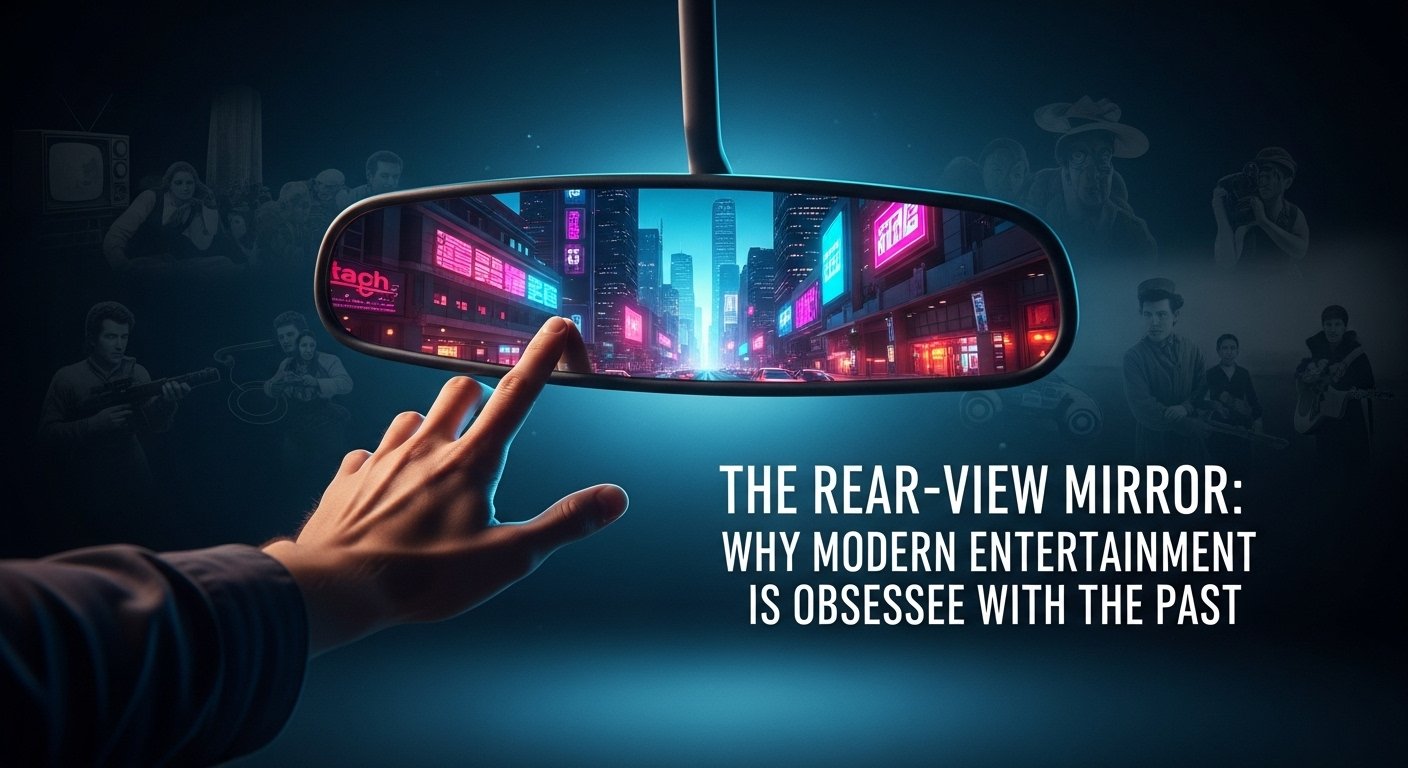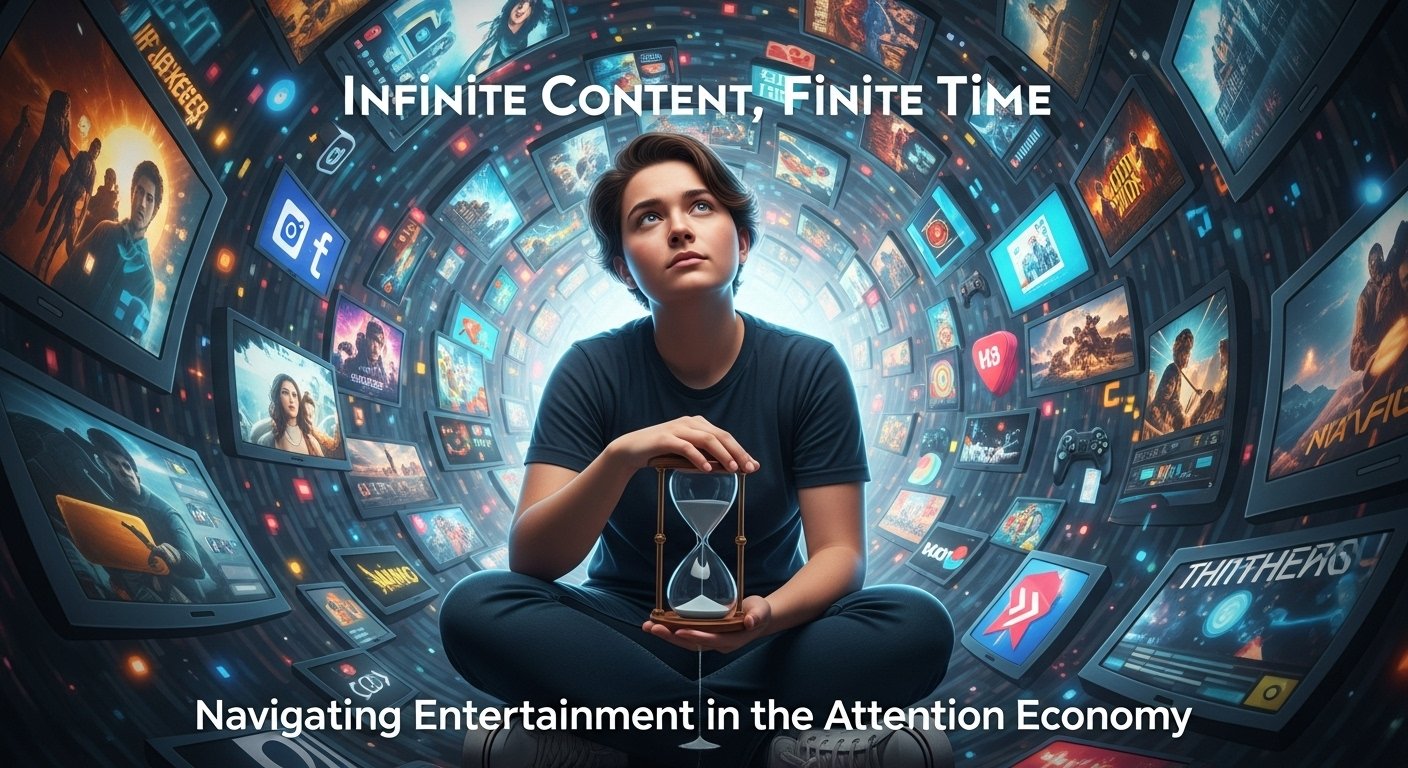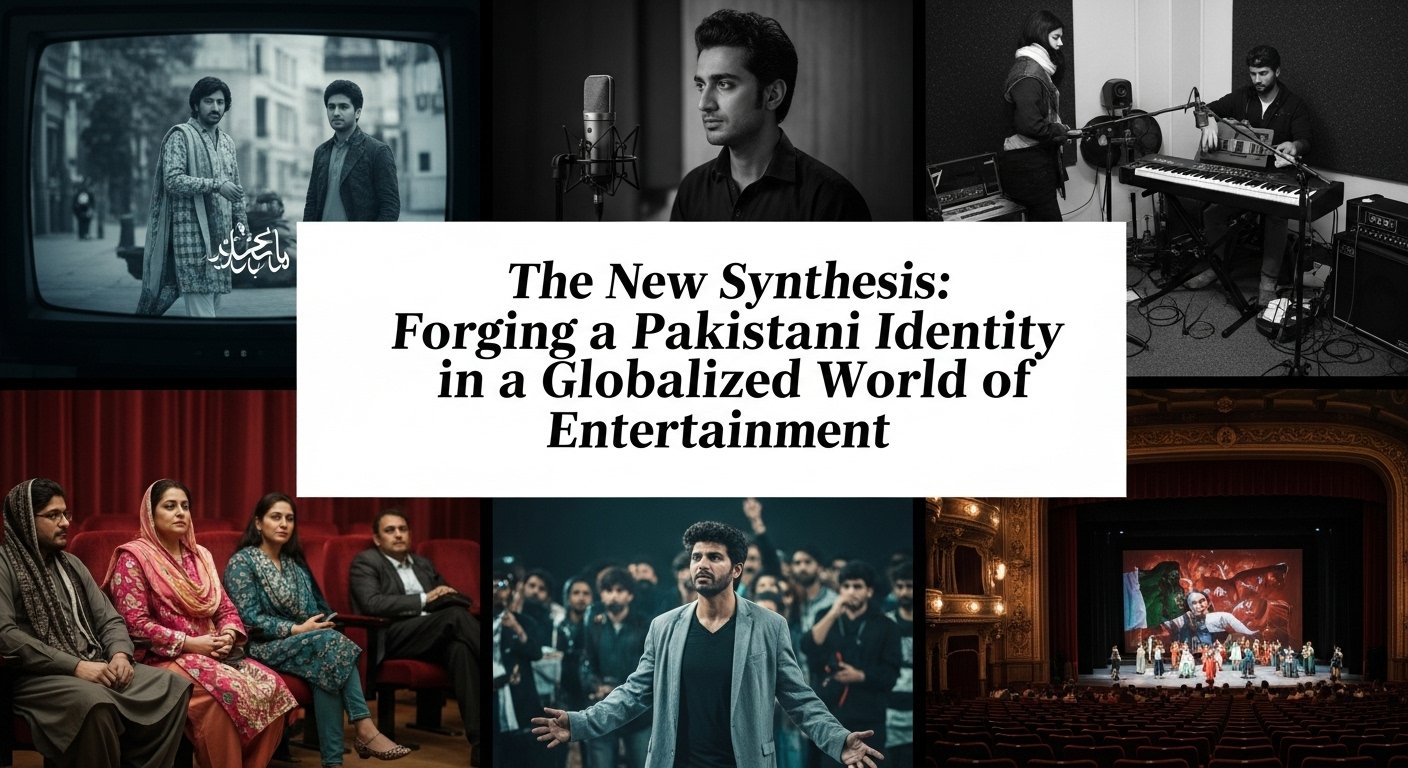A blockbuster film that dominated the 2025 box office is a sequel to a franchise from the 1990s. A chart-topping song heavily samples a funk classic from the 1980s. A critically acclaimed television series is a “prequel” that fleshes out the backstory of a beloved character from a 20-year-old show. In nearly every corner of our cultural landscape, the past is not just present; it is the main event. Entertainment in the 2020s is defined by a powerful and pervasive obsession with what came before.
This “nostalgia machine” is not a random coincidence. It is a potent cultural and economic force, driven by a deep psychological need for comfort in an uncertain world, fueled by risk-averse business models, and enabled by a technological ecosystem that has made our entire cultural history instantly accessible. We are living in a world that has perfected the art of looking back.
The Psychology of Comfort: Seeking Refuge in the Familiar
In an era characterized by rapid technological change, social flux, and global uncertainty, the past can feel like a safe harbor. Nostalgia offers a powerful psychological refuge, tapping into our memories of a time we perceive—rightly or wrongly—as simpler, safer, and more coherent. Familiar characters, stories, and music act as an emotional anchor, providing a sense of stability and continuity in a fast-moving world.
This phenomenon is reinforced by a principle known as the “reminiscence bump,” the well-documented tendency for adults to have the strongest and most vivid memories of events that occurred during their adolescence and early adulthood. For millennials, this means the culture of the 1990s and 2000s holds a particularly potent emotional charge. For Gen X, it is the 1980s. Entertainment properties from these eras are not just stories; they are keys that unlock a powerful sense of personal history and identity. This shared nostalgia also creates a valuable bridge between generations, allowing parents to share the beloved cultural touchstones of their youth with their own children.
The Economics of Safety: The Dominance of Intellectual Property
The creative impulse to revisit the past is powerfully amplified by the cold, hard calculus of the modern entertainment industry. As the production and marketing budgets for major films and high-end television series have soared into the hundreds of millions of dollars, the appetite for financial risk has plummeted. In this environment, an original, unproven idea is a massive gamble. A pre-existing Intellectual Property (IP), on the other hand, is an asset.
A beloved franchise, a classic book, or a well-known superhero comes with a built-in audience, established brand awareness, and a proven track record. From a studio’s perspective, investing in a sequel, reboot, or remake is a significantly safer bet. The perceived risk of a project can be understood through a simple conceptual relationship:
Rproject∝AawarenessCbudget
Where the project’s Risk (R) is proportional to its immense Cost (C) divided by its pre-existing Audience Awareness (A). A property with a high level of awareness drastically reduces the perceived risk, making it a far more attractive investment. This economic logic is why Hollywood now thinks in terms of interconnected “cinematic universes” rather than standalone films. The goal is to create a perpetual motion machine of content—films, spin-off series, video games, and merchandise—that keeps consumers financially and emotionally invested in a single IP for decades.
The Infinite Archive: How Technology Fuels the Cycle
The business models of the past were constrained by physical reality. Music went out of print, films left theaters, and old television shows were often difficult or impossible to find. Our cultural memory was curated and, in many ways, finite. The digital revolution has changed this completely.
The rise of on-demand streaming platforms like Netflix, Disney+, and Spotify, coupled with user-generated archives like YouTube, has created an “infinite archive.” Our entire popular culture history, from every era, is now instantly and endlessly available. This technological reality creates a self-perpetuating nostalgia loop. Data analytics can detect a surge in streaming for an old TV show, signaling to a studio that a latent market exists for a reboot. The studio then produces the new nostalgic content and promotes it heavily to users who enjoyed the original, creating a feedback cycle that is both culturally and commercially potent. This constant availability has also fueled a “remix culture,” where new art is often a direct conversation with the past, rewarding audiences for their deep knowledge of cultural history with clever references and “easter eggs.”
The Peril of the Past: Creative Stagnation and Lost Futures
While nostalgia can be a source of immense comfort and communal joy, a culture that is perpetually looking backward risks creative stagnation. When the vast majority of resources, talent, and marketing muscle is dedicated to re-telling old stories, it inevitably comes at the expense of creating new ones. The very economic logic that makes old IP so attractive also makes it incredibly difficult for original, challenging, and unproven ideas to get the support they need to break through the noise.
There is also the danger of “franchise fatigue.” An endless stream of sequels and spin-offs can dilute the magic of the original property, turning beloved stories into a content-delivery obligation rather than an artistic endeavor. The most significant peril, however, is the opportunity cost. Every film that retells a story we already know is a film that isn’t telling a new one. The great myths and foundational stories of our own time may be going unmade, crowded out by the long shadow of the past.
Conclusion: A Cultural Balancing Act
The entertainment industry’s deep engagement with nostalgia is a complex and defining feature of our time. It is a response to a genuine human desire for the comfort of the familiar, a rational economic strategy in a high-stakes industry, and a natural outcome of a technological age that has given us total recall of our own cultural past.
Nostalgia is not inherently good or bad; it is a tool. It can be used to connect generations and to re-examine old stories with a modern lens. But an over-reliance on it risks creating a culture that is more interested in curating its past than in building its future. The challenge for the entertainment world as we move through the late 2020s will be to find a healthier balance—to learn how to honor and enjoy the past without becoming creatively imprisoned by it, and to find the courage to champion the new, original voices that will create the beloved nostalgia for the generations to come.



